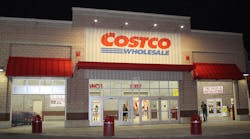My last column discussed the decline of a significant percentage of brick-and-mortar retailing establishments. That’s not to say that there is no hope for OEMs and suppliers that have previously marketed through physical buildings for the bulk of their sales.
In this column, I’ll discuss a currently employed approach that bridges one of the gaps between brick-and-mortar retailing outlets and e-tail, which shows the transition is possible. I’ll also outline what I consider to be a challenge that—if optimally addressed—can represent a competitive advantage to e-tailers.
Many OEMs have already started moving toward e-tail-like operations and may not even know it. I’m specifically referring to those that sell through big-box brick-and-mortar merchandising channels. How can I say that, in view of my premise that today’s brick-and-mortar retailing strategy is going the way of the dinosaur? Because in supporting their big-box customers, OEMs have had to tackle some of the challenges required to effectively operate in an e-tail environment.
All big-box stores rely on buildings and sales employees. On the other hand—similar to e-tailers—they carry minimum inventory, requiring their suppliers to have the capability to satisfy short-fuse orders. And by short fuse, I mean within hours or days. As discussed in previous columns, OEMs have three strategies available for meeting this requirement: pre-built, pre-positioned Finished Goods Inventory; manufacturing flexibility/responsiveness; or a combination of both.
Of course, most OEMs apply the third strategy, with those relying less on inventory having lower overhead costs and consequently having the potential to be more competitive. Most customers that buy online aren’t willing to wait for a product that is shown as out of stock. Consequently, those OEMs that can support customer demand with minimum reliance on pre-built inventory have developed a capability necessary to effectively market online.
I need to describe what I mean by the term “pre-positioned.” In the past, OEMs tended to ship directly from factory to retail outlet. But longer transportation times to some outlets tend to undercut short-fuse order fulfillment capability. And remember, unlike the automotive companies who support Customer Fill Rates by stocking significant inventory at their dealerships, big-box merchandisers rely on their OEM responsiveness to retain sales.
One pre-position strategy is to have optimally located regional warehouses that hold enough inventory to service retailers in specific areas of the country. This is a proven strategy for reducing the amount of pre-built Finished Goods Inventory needed to support high Customer Fill Rates. Imagine how much money automotive manufacturers could save if they moved most of their current dealership inventories to such warehouses, thereby reducing a large part of the costs associated with stocking at every dealership! The conclusion, then, is that OEMs that can effectively sell through big-box stores have already met one of the challenges to market and fulfill e-tail orders.
On the other hand, there is a large service-related challenge facing OEMs wanting to transition to selling products through e-tail: Specifically, dealing with both lack of product reliability—failures—or performance shortcomings. And sometimes other factors, as will be described below. Many commodity-type products sold today are considered throw-away. In other words, if something on them breaks or otherwise become non-functional, the end-use consumer throws them in the trash and buys a new one. This happens whether a product is sold through brick-and-mortar or e-tail channels. The primary thing the OEM loses is a bit of reputation.
As an aside comment, OEMs tend to spend a large part of their marketing budget on trying to convince potential end-use customers that their products are not commodities. For the most part, I consider this wasted monies, especially in certain product categories. Why? Because the trend in these categories is for product specs and performance to become significantly overlapped. This causes many end-users to focus on price, which—if you think about it—is exactly what many OEMs are currently doing in their sourcing decisions! It’s difficult to differentiate when you both purchase and sell based on price, since neither activity addresses actual or perceived value.
Read more of Paul Ericksen's supply chain management articles
For higher-priced products, however, customers typically want to have the option of having repair or replacement support for their products. And they typically prefer at-home service calls rather than having to take the product into a local—or sometimes distant—service center. For instance, to get my ride-on lawn mower serviced, I either have to rent a trailer and drive for an hour-and-a-half to the nearest dealership or pay the dealer $150 for a pick-up and return. I am not happy about this since I used to have a local dealer 12 miles away.
Some big-box merchandisers provide service by signing up independent local contractors. I have had reason to call upon such resources and, for the most part, have been satisfied with their work. On the other hand, I’ve had to wait a significant amount of time—sometimes weeks—in order to schedule an on-site visit. And of course, the repair cost represented a large percentage of the product’s original purchase price.
Many big-box stores wash their hands completely of providing repair services, instead referring customers needing it back to the actual manufacturer of the products. I have also had experience with this approach and have not been satisfied with the level of support provided. In fact, it is often near impossible to get in contact with an actual employee from the company that has adequate product knowledge to be of much help. Again, the negative financial exposure to OEMs is limited in this scenario.
Similar to the above, some retailers and e-tailers have a customer satisfaction strategy of being willing to take back products for whatever reason the customer gives. Sometimes this offer is open for months or even longer. Originally, such policies were established to gain a competitive advantage by increasing customer-perceived value. However that advantage is no longer a significant customer buying consideration since retailers have for the most part—in one form or another—adopted that strategy.
Realize, though, big-box stores don’t have skin in the game on these types of returns, instead putting all of the onus and costs on the company that manufactured products in the first place. Because of this, OEMs anticipate returns in their annual financials, increasing product pricing. For instance, I’ve worked with companies that budget as much as 3 to 5% of overall Cost-of-Goods-Sold to cover the expected return expenses.
Let me give you an example of what a liberal return policy can result in. I once worked for a company that had to deal with returns in almost a surreal way. The company in question sold chain saws and gas-powered electric generators, primarily through big-box stores. The big-box stores has a policy that customers could return these products for any reason within 30 days of purchase.
Every fall during hurricane season, my company would see a spike in sales of these two types of products. But then within 30 days, about 90% of that sold product was returned, first to the big-box retailer and then to my employer. And for a high percentage of them, all that was required to prepare them for resale was cleaning them up and pulling the engine start cord to verify function. In other words, there was nothing wrong for with the products. Most customers who had storm damage could probably clean it up in less than 30 days and then return what was no longer needed.
For the most part, the big-box stores themselves had little negative financial exposure. It was my employer who felt the financial pain having to bear the costs of receiving returned product back from the field, refurbishing it and then having to price it significantly below the brand new product.
I’m not sure what the solution is to this, but OEMs getting into e-tail who figure out a way to deal with the return issue in a more reasonable manner will have a significant advantage over their competition.
Paul Ericksen is IndustryWeek’s supply chain advisor. He has 40 years of experience in industry, primarily in supply management at two large original equipment manufacturers.




